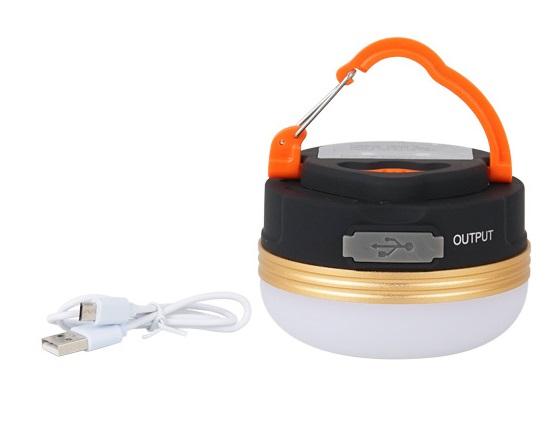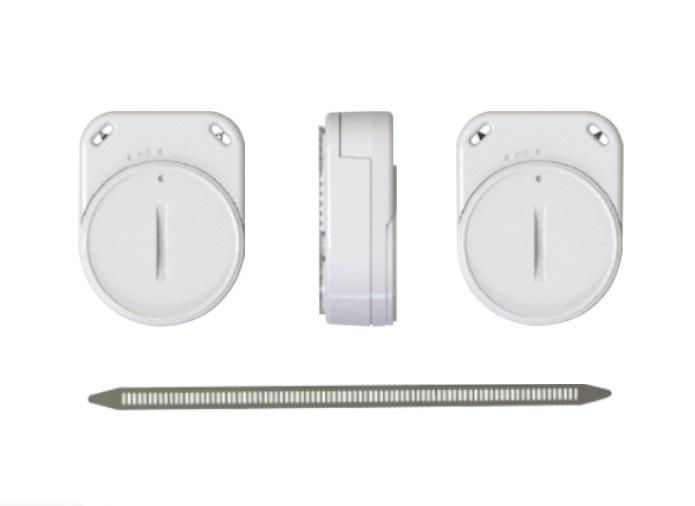Rechargeable LED lights are energy-efficient and environmentally friendly, providing a sustainable solution for lighting and enhancing the overall lighting experience.
This article will outline the benefits of rechargeable LED lights.
What are Rechargeable LED Lights?
Rechargeable LED lights are portable lighting devices equipped with LED bulbs and built-in rechargeable batteries. These lights can be charged via various methods, such as USB ports, solar panels, or traditional electrical outlets, and they can provide illumination without the need for external power sources.
Rechargeable LED lights come in a variety of forms, including:
- Flashlights. Rechargeable LED flashlights are compact and lightweight, making them ideal for emergency situations, outdoor activities, and everyday use.
- Work Lights. These lights are designed to provide bright illumination for various tasks, such as automotive repairs, construction work, and DIY projects. They often feature adjustable brightness levels and adjustable heads for directing light where it's needed.
- Lanterns. Rechargeable LED lanterns are versatile light sources suitable for camping, hiking, picnics, and power outages. They typically offer omnidirectional illumination and may have features like collapsible designs for easy storage and carrying.
- Headlamps. Head-mounted rechargeable LED lights are hands-free lighting solutions commonly used for outdoor activities like hiking, running, biking, and fishing. They provide convenient illumination while keeping your hands free to perform tasks.
- Desk Lamps. Rechargeable LED desk lamps are compact, portable, and suitable for providing task lighting in various settings, including offices, bedrooms, and study areas. They often feature adjustable brightness levels and color temperatures for personalized lighting.
- String Lights. Rechargeable LED string lights are decorative lighting options commonly used for outdoor events, parties, weddings, and patio or garden illumination. They offer ambiance and can be easily hung or draped without the need for electrical outlets.
- Emergency Lights. These lights are designed for use during power outages or emergencies. They often feature additional features like built-in power banks for charging mobile devices, SOS signaling modes, and rugged designs for durability.
Rechargeable LED lights offer numerous benefits, including energy efficiency, portability, versatility, and convenience. They are a practical lighting solution for a wide range of applications, both indoors and outdoors.
How Do Rechargeable Light Bulbs Work
Rechargeable light bulbs are a versatile lighting solution that combine LED technology and rechargeable battery technology. They use LED bulbs, which are highly energy-efficient and produce minimal heat, making them safer and more durable. They also have a built-in rechargeable battery, typically lithium-ion or lithium-polymer batteries, which store electrical energy when connected to a power source.
Rechargeable light bulbs can be charged using various methods, such as traditional electrical outlets, USB ports, solar panels, or induction charging bases. A power management system regulates the flow of electricity from the battery to the LED bulbs, ensuring efficient energy usage and preventing overcharging or over-discharging.
Rechargeable light bulbs typically have an on/off switch or additional controls for adjusting brightness levels and light modes. Some may also include automatic functionality, such as motion sensors or light sensors, which activate the light bulb when movement is detected.
Once fully charged, rechargeable light bulbs can be used independently without a continuous external power source, providing illumination for a specific duration depending on factors such as battery capacity, LED brightness, and additional features or modes. They offer a convenient and energy-efficient lighting solution for various applications, including emergency lighting, outdoor activities, power outages, and areas without access to electrical outlets.
Benefits of Rechargeable LED Lights
Rechargeable LED lights combine energy efficiency, convenience, and versatility, making them an excellent choice for a wide range of lighting needs. Whether for indoor or outdoor use, their portability, cost-effectiveness, and environmental benefits make them a popular lighting solution in many situations. These are several benefits they offer compared to traditional lighting options.
1. Portability
Rechargeable LED lights are typically lightweight and compact, making them easy to carry and transport. This portability is especially useful for outdoor activities, camping, emergencies, and working in areas without access to electrical outlets.
2. Energy Efficiency
LED lights are highly energy-efficient, consuming significantly less power than traditional incandescent or fluorescent bulbs. This efficiency, combined with rechargeable batteries, means that rechargeable LED lights can provide long-lasting illumination on a single charge.
3. Cost Savings
While rechargeable LED lights may have a higher upfront cost compared to traditional lighting options, they can lead to significant long-term cost savings. Since LEDs consume less energy and have a longer lifespan, they can help reduce electricity bills and replacement costs over time.
4. Environmentally Friendly
LED lights contain no harmful substances such as mercury, unlike some other types of lighting. Additionally, their energy efficiency reduces carbon emissions associated with electricity generation, making them a more environmentally friendly lighting option.
5. Convenience
Rechargeable LED lights eliminate the need for disposable batteries, reducing waste and the hassle of constantly purchasing and replacing batteries. Instead, you can simply recharge the built-in batteries using a USB cable, solar panel, or other charging methods.
6. Versatility
Rechargeable LED lights come in various shapes, sizes, and designs, offering versatility for different applications. They can be used for task lighting, emergency lighting, outdoor lighting, decorative lighting, and more.
7. Safety
LED lights produce very little heat compared to traditional lighting options, reducing the risk of burns or fire hazards. This makes them safer to use, especially in confined spaces or around flammable materials.

